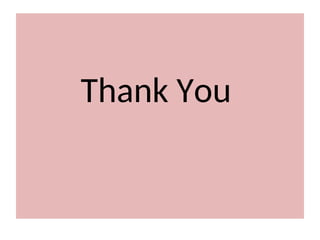Epistaxis ( Nose Bleeding ) .ppt
- 2. Learning objectives At the end of this lecture, the students should be able to • define epistaxis. • enlist the causes epistaxis • describe the clinical manifestations of epistaxis. • discuss the management of epistaxis. 2
- 3. Introduction • Bleeding from inside the nose is called epistaxis • Fairly common and is seen in all age groups. “Epistaxis refers to nose bleed or hemorrhage from the nose”. • It‘s mostly commonly originates in the anterior portion of the nasal cavity. 3
- 4. 4
- 5. 5
- 6. EPISTAXIS (NOSEBLEED) A hemorrhage from the nose, referred to as epistaxis, is caused by the rupture of tiny, distended vessels in the mucous membrane of any area of the nose. 6
- 7. Most commonly, the site is the anterior septum, • the anterior ethmoidal artery on the forward part of the roof • the sphenopalatine artery in the posterosuperior region, and • the internal maxillary 7
- 8. Types of Epistaxis 1. ANTERIOR EPISTAXIS (Most common and less severe and easy to control) 2. POSTERIOR EPISTAXIS ( Less common more severe and difficult to control) 8
- 9. Causes and risk factors • trauma, • infection, (rhinitis, sinusitis, fever) • inhalation of illicit drugs,(cocaine) • cardiovascular diseases, (HTN) • tumor, • thrombocytopenia 9
- 10. • Rendu- Osler- Weber syndrome • low humidity, • a foreign body in the nose, and • a deviated nasal septum. • Additionally, vigorous nose blowing and nose picking. 10
- 11. 11
- 12. Clinical features • continuous and intermittent bleeding • Hemoptysis or Hematemesis • anxiety • shock 12
- 13. Investigations • Haemogram • Test for coagulation (CT & BT) • Radiography • CT scan • Endoscopy • Biopsy 13
- 14. Medical Management • Management of epistaxis depends on the location of the bleeding site. • A nasal speculum or headlight-to determine the site of bleeding in the nasal cavity. • Most nosebleeds - anterior portion of the nose. 14
- 15. • Initial treatment may include applying direct pressure. • The patient sits upright with the head tilted forward to prevent swallowing and aspiration of blood 15
- 16. 16
- 17. Directed to pinch the soft outer portion - the midline septum for 5 or 10 minutes. If this measure is unsuccessful, additional treatment is indicated. • silver nitrate applicator and Gelfoam, or by electrocautery. 17
- 18. • Topical vasoconstrictors, such as adrenaline (11,000), • cocaine (0.5%), and phenylephrine may be prescribed. • If bleeding -posterior regions, • cotton pledgets soaked in a vasoconstricting solution may be inserted into the nose. • Suction 18
- 19. When the origin of the bleeding cannot be identified, • the nose may be packed with gauze impregnated with petroleum jelly or • antibiotic ointment; • a topical anesthetic spray and • decongestant agent. 19
- 20. • The packing may remain in place for 48 hours or up to 5 or 6 days if necessary to control bleeding. • Antibiotics may be prescribed because of the risk of iatrogenic sinusitis and toxic shock syndrome. 20
- 21. 21
- 23. Nursing Management • The nurse monitors the vital signs, • assists in the control of bleeding • Assuring the patient in a calm, efficient manner that bleeding can be controlled can help reduce anxiety. 23
- 24. TEACHING PATIENTS SELF-CARE • Discharge teaching • avoiding forceful nose blowing, • straining, high altitudes, and nasal trauma. • Adequate humidification may prevent drying of the nasal passages. 24
- 25. The nurse instructs the • Patient how to apply direct pressure to the nose with the thumb and the index finger for 15 minutes in the case of a recurrent nosebleed. 25
- 26. • If recurrent bleeding cannot be stopped, the patient is instructed to seek additional medical attention. 26
- 27. Summary So far we have discussed about definition, causes, clinical manifestations, and managements of epistaxis.
- 28. Bibliography • Lewis et al, Medical Surgical Nursing, Mosby Elsevier,7th edition. • Joyce.M.Black et al, Medical Surgical Nursing, Saunders publication. • Brunner and Siddhartha, Medical Surgical Nursing, Lippincott Williams and Wilkins. 28
- 29. Thank You





























